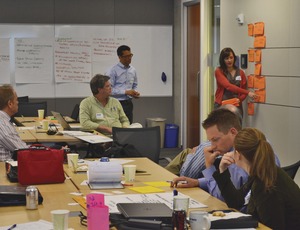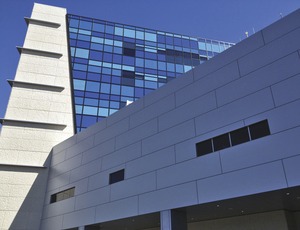


Every contractor has seen it happen: a project design that, for whatever reason, exceeds the owner's budget. If there's no leeway to spend more—and these days, there usually isn't—the contractor has little choice but to value engineer the design down to size.
Some value engineering decisions are relatively easy, others aren't. Although the result may satisfy the owner's pocketbook, not everyone perceives value engineering the same way. Rationalizing a successful project outcome that pleases few people doesn't seem entirely acceptable either.
The advent of lean construction and integrated project delivery (IPD) practices have gone a long way toward narrowing budget-driven differences that can necessitate value engineering. Having all participants actively involved and communicating from the outset often yields far more consensus than conflict about what actually gets built.
Still, gaps usually exist between what's wanted and what's affordable in capital construction, and the latest IPD iteration, target value design (TVD), offers the potential to ensure that owners get what they pay for—and often much more. Rather than designing first and estimating later, TVD pegs a project's validated estimated cost as the starting point. Targets are established for all relevant components (e.g., building envelope; structural system; interior finishes; mechanical, electrical and plumbing systems; etc.), and then they are adjusted up or down collaboratively by cross-disciplinary teams as the design evolves.
But cost is only one component of TVD. The project team also sets and designs toward other owner-established targets such as sustainability, staffing, square footage, operations and life-cycle costs. As the TVD process progresses, various options and their effect on other parts of the project are continually considered and discussed within the context of the overall project.
For example, relocating a chiller from the roof to the basement for seismic reasons may require more expensive HVAC equipment, but it will also reduce the building's upper-level structural support requirements.
And by using a back-loaded schedule to determine lead times, the entire project team knows when decisions absolutely have to be made, thereby ensuring sufficient time to fully assess and discuss options.
Dick Bayer, interim executive director of the national nonprofit Lean Construction Institute (LCI), which works to reform management of production in capital facilities design, engineering and construction, calls TVD "a very robust process to cut out contingencies and waste and drive efficiencies without sacrificing quality. And as costs go down, the team can add other features that enhance the project's overall value while still maintaining the budget target."
Although cost certainty is a key outcome in TVD, Dean Reed, lean coordinator for DPR Construction Inc., San Francisco, says it's a mistake to think that cost drives design. "Cost informs design throughout the conversation between designers and builders," Reed explains. "That makes for a healthy dialogue and debate to work through differences and find a solution that meets the owner's goals."
Contractors as Catalysts
While all members of a team bring valuable perspectives to TVD, contractors play a particularly pivotal role as they continually provide estimates and constructability insights, resulting in more informed, realistic design decisions. "What better source of expertise and knowledge for improving the process than the general contractor?" Bayer asks.
"Contractors have to drive the process," agrees Victor Sanvido, president of Garden Grove, Calif.-based mechanical contractor Southland Industries and chair of LCI's national board. "Their knowledge is what enables the team to control the design and achieve the balance of selecting the right systems at the right price."





Post a comment to this article
Report Abusive Comment